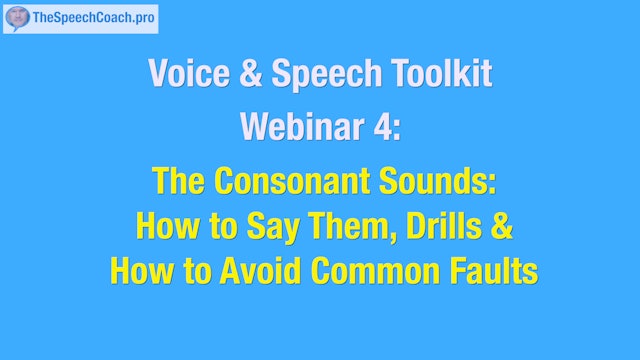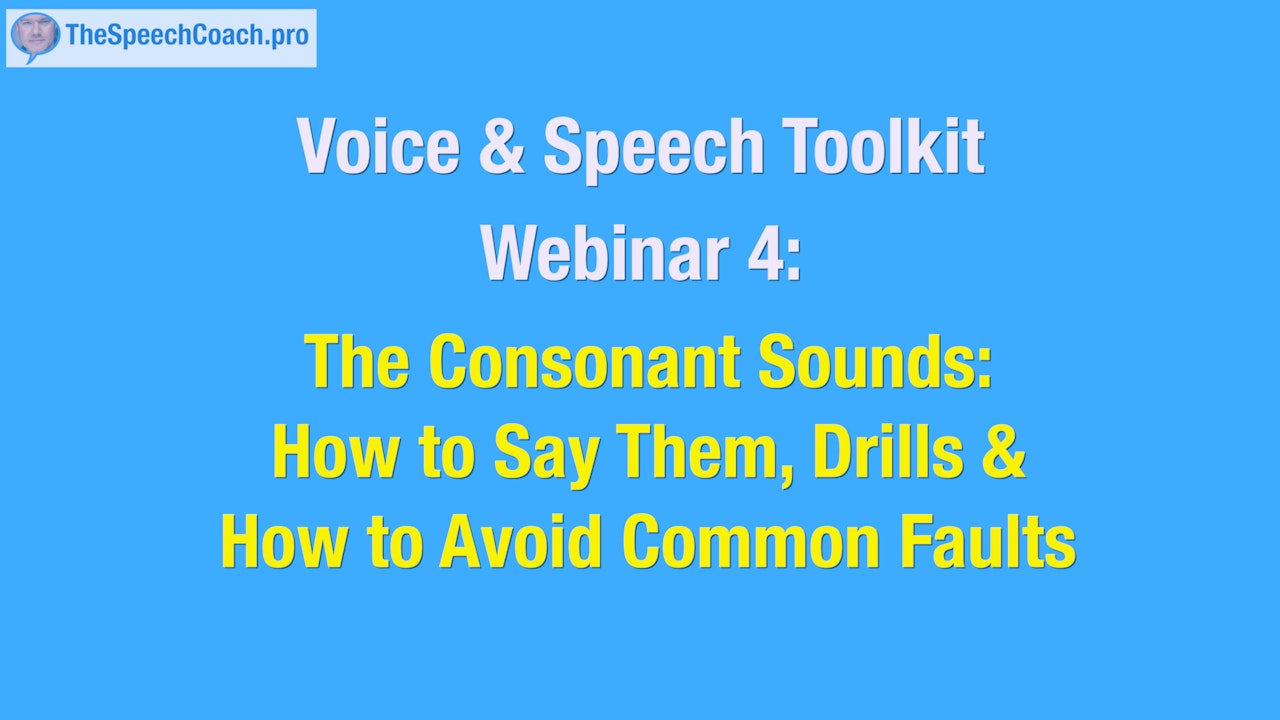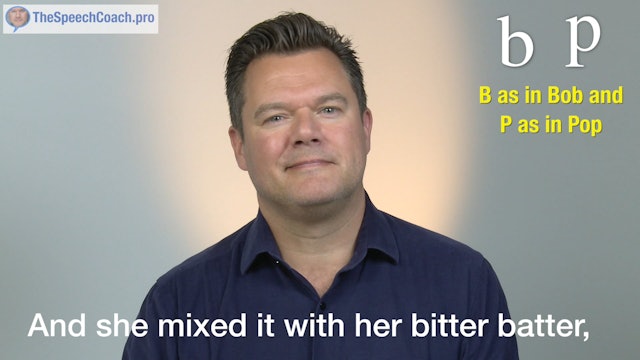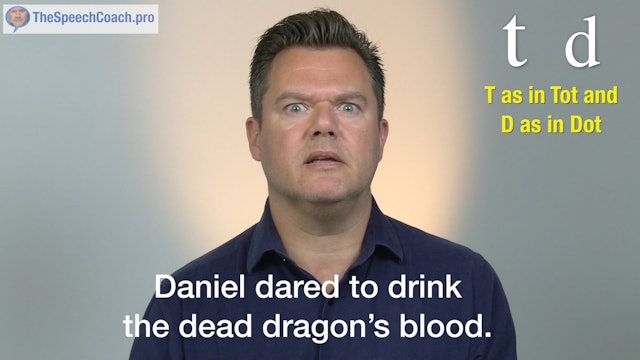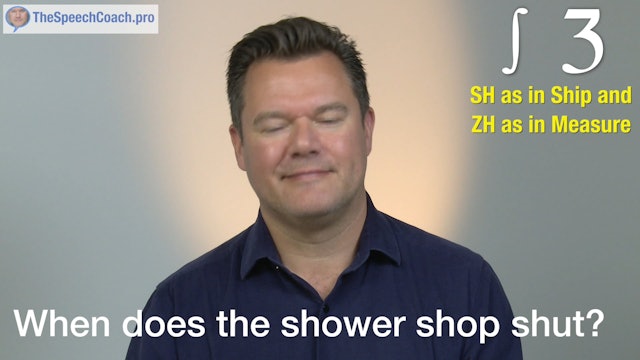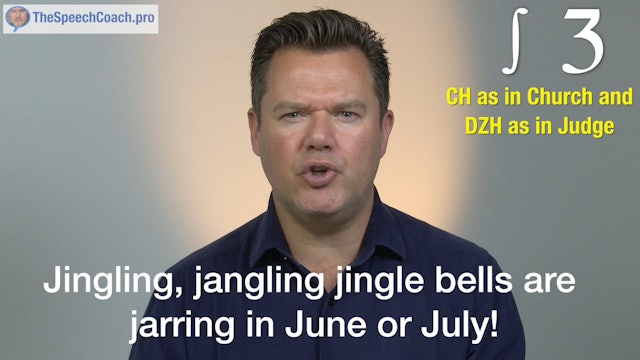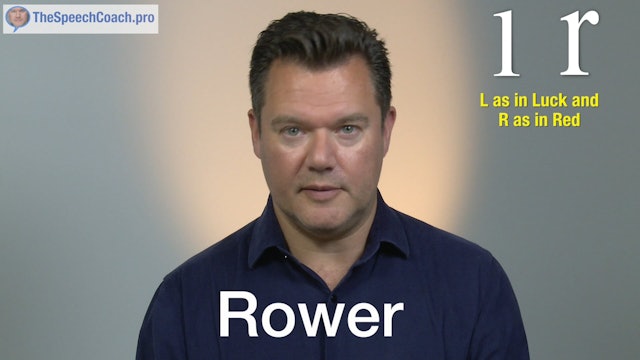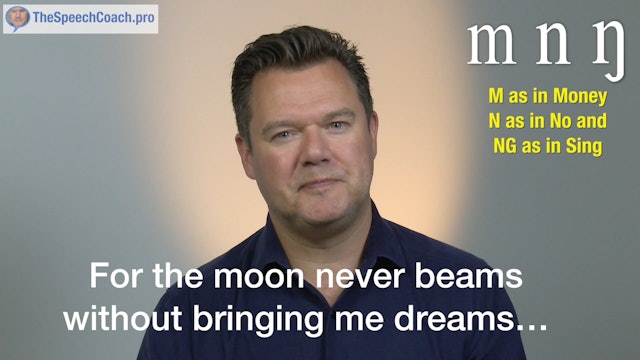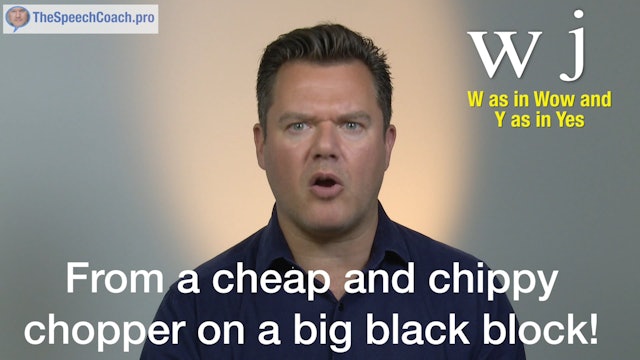4: The Consonant Sounds: How to Say Them, Drills & Avoiding Faults
Consonant sounds are made in many different ways but many speakers go wrong because they do not use their voice when they should use their voice.
Consonant sounds can be voiced, as in Z. You can hear my voice, can't you? Or consonant sounds can be unvoiced, as in S. You just hear the hissing sound with no voice behind it. However, the S sound is sometimes voiced and is pronounced as a voiced Z sound.
The word spelled U-S-E is pronounced use when it appears in its noun form and use when it appears in its verb form. I will not use this because it has no use. If the S sound is unvoiced when it should be voiced, then a speaker will be what voice teachers call sibilant. Their speech is too hissy and is often perceived as weak sounding.
As I said, many problems can occur because speakers do not use their voice when they should. Remember that the voice can communicate so much emotional information or meaning. Think about how many messages can be communicated with a simple mm sound. That tastes good. Mm. I finally understand. Mm! Hurry up with the lesson. Mm.
One sure and certain way to improve the impact of our speech is to make sure that the voice is used whenever it should be used. All our consonant lessons will also include a reminder of all 25 of the vowel sounds.
-
027 B as in Bob and P as in Pop
The first consonant sound we will cover is “B” as in “BIB”. This is a plosive consonant sound which simply means that the flow of air is stopped and then suddenly released: “B”
Take special care with consonant sounds at the ends of words, that you don’t do too much with your voice so that it sou...
-
028 T as in Tot and d as in Dot
Continuing with the plosives we have:
T which is not voiced and also its voiced equivalent D. Compare the two sounds and listen for the voice in the D sound:
T/D T/D T/D T/D
To make the T sound, press the tip of your tongue against the alveolar ridge - the gum line just above and behind your ...
-
029 K as in Kick and G as in Gag
The consonant C can sometimes be pronounced “S” as in “since” but here we are looking at the hard, plosive, unvoiced “K” sound indicated by both the letters C and K. So that’s “K” as in “can”. And we are also looking at its voiced equivalent “G” as in “get”.
Compare the two sounds:
K/G K/G K/G...
-
030 F as in Faff and V as in Van
Another unvoiced and voiced pair of sounds are “FFF” usually denoted by the letter F and “VVV” denoted by the letter V. Sometimes the letter F can require a voiced “VVV” sound as in the word “of”. The double F in “off” has the unvoiced “FFF” sound. As ever, you can always refer to a dictionary’s ...
-
031 H as in Hot
The “H” sound denoted by the letter aitch is called a glottal fricative sound and is made by breathing out through a slightly narrowed opening at the very back of your mouth and the top of your throat. This is achieved by slightly closing up your airway so that the air hisses slightly: “HHH”. If ...
-
032 SH as in Ship and ZH as in Measure
Now let’s look at the unvoiced and voiced pair “SH” and “ZH”. Phonetically, the symbol for “SH” is a sort of elongated “S” and the symbol for “ZH” is a cross between a “Z” and the number 3. These sounds are postalveolar, meaning the tip of your tongue should be just beyond the alveolar ridge, and...
-
033 CH as in Church and DZH as in Judge
Another pair of voiced and unvoiced sounds is CH and DZH. Phonetically, CH is written as T followed by the symbol for SH. T plus SH gives us CH as in
Church
Match
NatureNotice that this sound isn’t only indicated by a C and H spelling.
DZH is written phonetically as D followed by the sy...
-
034 Voiced TH as in This and Unvoiced TH as in Thing
This is a tricky pair of sounds because although they are always spelled the same way, “T.H.”, they can be pronounced as either voiced: “TH” or unvoiced. As ever, if you are confused, the dictionary will always help you. Phonetically, the voiced “TH”, as in This, symbol is a sort of “o” with a li...
-
035 L as in Luck and R as in Red
This pair of sounds are not linked quite as obviously as the pairs we have studied so far - but the movement of the tongue that is needed to make each sound is very similar. These sounds are “L” and “R”.
To make the “L” sound, the tip of your tongue brushes over the alveolar ridge like this:
... -
036 M as in Money - N as in No and NG as in Sing
The sounds “M”, “N” and “NG” are nasal sounds - so called because the sound of the voice is pushed into your nasal resonating cavities. These are excellent sounds to use when you want to improve the resonance of your voice.
Humming on a “MMM” sound with your lips together and your teeth apart ...
-
037 S as in Speech and Z as in Zoo
Our final pair of voiced and unvoiced sounds are “S” and “Z”.
These sounds are alveolar fricatives so the breath is channeled straight forward into the alveolar ridge: “SSS” “ZZZ”
The “S” sound can become slushy and move towards a “SH” sound. This happens particularly when the S is followed...
-
038 W as in Wow and Y as in Yes
This pair of sounds are approximant sounds. “W” and “Y”. These consonant sounds are almost vowels.
“W” is made with a tiny “oo” sound and then moves to the vowel which follows it.
“Y” is made with a tiny “I” sound and then moves to the sound that follows it. Phonetically it is written as a ...
